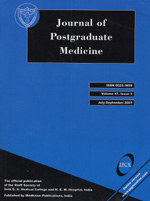
|
Journal of Postgraduate Medicine
Medknow Publications and Staff Society of Seth GS Medical College and KEM Hospital, Mumbai, India
ISSN: 0022-3859
EISSN: 0022-3859
Vol. 50, No. 2, 2004, pp. 145-149
|
 Bioline Code: jp04045
Bioline Code: jp04045
Full paper language: English
Document type: Research Article
Document available free of charge
|
|
|
Journal of Postgraduate Medicine, Vol. 50, No. 2, 2004, pp. 145-149
| en |
Review Article - Vegetables, fruits and phytoestrogens in the prevention of diseases
Heber David
Abstract
The intake of 400-600 g/d of fruits and vegetables is associated with reduced incidence of many common forms of cancer, and diets rich in plant foods are also associated with a reduced risk of heart disease and many chronic diseases of ageing. These foods contain phytochemicals that have anti-cancer and anti-inflammatory properties which confer many health benefits. Many phytochemicals are colourful, and recommending a wide array of colourful fruits and vegetables is an easy way to communicate increased diversity of intake to the consumer. For example, red foods contain lycopene, the pigment in tomatoes, which is localized in the prostate gland and may be involved in maintaining prostate health, and which has also been linked with a decreased risk of cardiovascular disease. Green foods, including broccoli, Brussels sprouts and kale, contain glucosinolates which have also been associated with a decreased risk of cancer. Garlic and other white-green foods in the onion family contain allyl sulphides which may inhibit cancer cell growth. Other bioactive substances in green tea and soybeans have health benefits as well. Consumers are advised to ingest one serving of each of the seven colour groups daily, putting this recommendation within the United States National Cancer Institute and American Institute for Cancer Research guidelines of five to nine servings per day. Grouping plant foods by colour provides simplification, but it is also important as a method to help consumers make wise food choices and promote health.
Keywords
Dietary patterns, cancer prevention, phytochemicals
|
| |
© Copyright 2004 Journal of Postgraduate Medicine.
Alternative site location: http://www.jpgmonline.com
|
|
